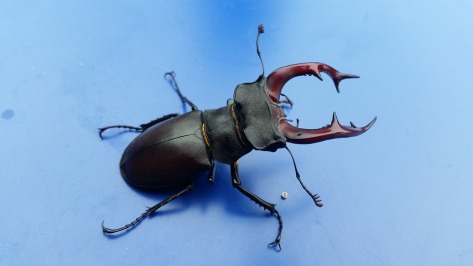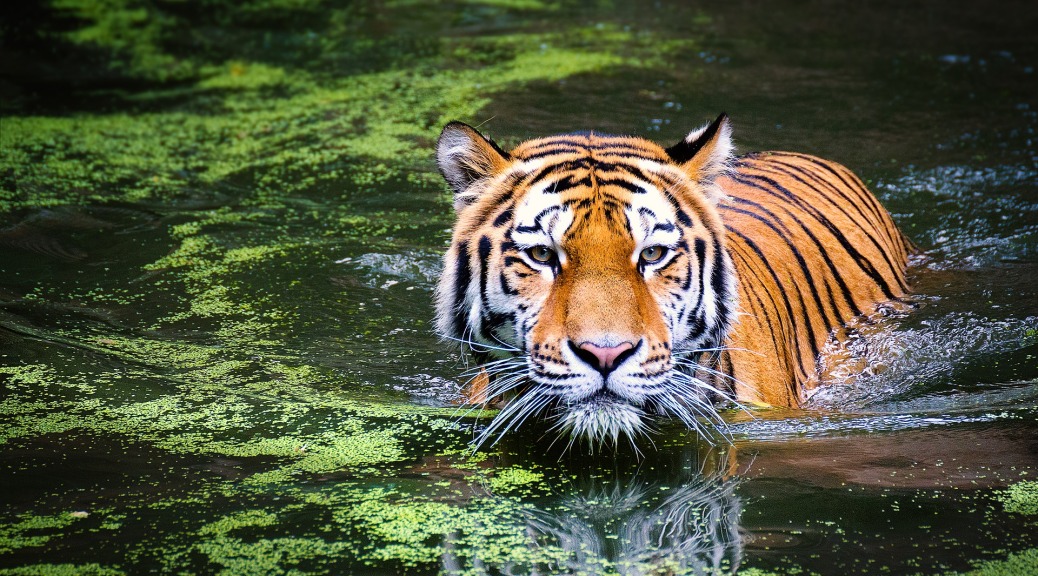On May 22nd, the International Day of Biological Diversity is celebrated worldwide, or in other words, the day of biodiversity, to commemorate the approval of the Convention on Biological Diversity. Did you know that we only know 15% of all the biodiversity on the planet? Discover more!
HOW MANY SPECIES LIVE ON EARTH?
Before answering this question, it is important to understand the concept of biodiversity or biological diversity.
WHAT IS BIODIVERSITY?
Biodiversity is the living beings on Earth and the natural patterns that make up, that is, the set of existing plants, animals and microorganisms. This biodiversity must be understood within each species, between species and ecosystems.

THE CONVENTION ON BIOLOGICAL DIVERSITY
The Convention on Biological Diversity, which was adopted in 1992 and has the ratification of 193 countries to date, has three main objectives: the conservation of biological diversity, the sustainable use of its components and the fair and equitable participation of the benefits that derive from the use of genetic resources, in order to promote measures for a sustainable future.
The governments of the acceding countries meet every two years to examine progress, set priorities and adopt work plans.
According to the Convention, species, genetic resources and ecosystems should be used for the benefit of the human being, but without this implying a reduction in biodiversity. It also applies the precautionary principle, that is, when there is not enough scientific evidence to demonstrate the reduction or loss of biodiversity, it should not be used as a reason to postpone taking measures to deal with it. Thus, it is an instrument that promotes sustainable development.
SPECIES OF THE EARTH
To date, a total of 1.3 million species have been identified and described, but the truth is that many more live on Earth. The most accurate census, conducted by the Hawaii’s University, estimates that a total of 8.7 million species live on the planet.
If we take this figure as good, it means that we have described only 15% of all the organisms that live on Earth. To be more precise, we still have 86% of the terrestrial species to be described and 91% of the marine species.
To give an example of how far we are from knowing all the species, last year we identified a new species of primate: the orangutan of Tapanuli (Pongo tapanuliensis), which lives on the island of Sumatra (Indonesia).

In spite of these figures, the dance of numbers is important and the different investigations carried out give different values, reaching the point that some point out that there would be 100 million species.
What is clear is that we have a long way to go until we have a complete catalog of species. Worst of all, many of these unidentified species are becoming extinct before we discover them.
CLASIFICATION AND DISTRIBUTION OF THE SPECIES
Here we do not want to talk about the way species are classified, as we already did in this article on classification and phylogeny. Here we want to see how species are distributed in the different groups of living beings.
If we take the classification system of Margulis and Schwartz of organization of living beings in five kingdoms, according to Llorente-Bousquets, J and S. Ocegueda (2008), this is the distribution of the known species of the planet:

The predominant group is that of animals, representing 76% of all known species. Within animals, arthropods are the group with the most species, with about 1.2 million species (1 million of which are insect species), representing 86% of all known animals. Our group, the chordates, is light years away from this figure, since it is made up of some 61,000 species (4% of the species), being surpassed by that of the molluscs, with some 85,000 species.

Plants represent 17% of the species studied, with approximately 292,000 species. These include different large groups: angiosperms (87% of species), gymnosperms (0.3%), ferns (4.3%) and bryophytes (9%).
WHAT IS THE CAUSE OF SPECIES EXTINCTION?
Human activities cause a decline in species because the principles of sustainable development are not always applied. Among these activities, the following should be highlighted:
- Alteration and destruction of ecosystems. The destruction of the rainforest is an example. In many tropical areas, such as Southeast Asia, it is devastated with large areas of forest to plant the palm, from which the famous palm oil is extracted. This endangers a high number of species, among which there are orangutans. Avoid products with palm oil to avoid this situation! Another example is the fragmentation of rivers due to the construction of large dams, which prevents fish such as salmon, eel or lamprey to move freely between rivers and the sea.

- Agricultural practices The abusive use of pesticides is causing the massive death of bees, insects essential for pollination and, therefore, for the provision of food. As we have seen before, agriculture needs land and, when it is not available, large areas are destroyed.
- Hunting and exploitation of animals. Until not many years ago, there was a hunt for animals that were thought to be harmful to livestock, hunting or man, as in the case of the Iberian wolf. Trade in exotic species, collecting or capturing animals with supposedly curative properties are also threatening biodiversity.

- Introduction of exotic species. When a species is introduced, voluntarily or involuntarily, in an area where it is not native it is called an exotic species. These compete for space and resources with the natives, so that local species are harmed. If, in addition, these new species displace the locals then they have an invasive behavior. In Hawaii, human activity and the introduction of new species such as the rat has caused the disappearance of 90% of native bird species.
- Climate change. Climate change is responsible for the alteration of habitats and the conditions in which the species live. It causes bleaching of corals, expansion of epidemics, causes changes in the migration of species such as whales, increases sea level... and a long etcetera.

- Tourism. When tourism is carried out in a non-respectful manner with biodiversity or exceeding the carrying capacity of the ecosystem, nature may be affected. The solution is sustainable tourism.
- Ignorance. Ignorance is the worst enemy for conservation. For this reason this blog was born, to raise awareness among its readers of the importance of preserving nature.
Are you a lover of nature and biodiversity? Share with us what you do to prevent threatening nature!



Human over-population is the #1 cause of species extinctions and dramatically lower numbers of wild species remaining (especially WILD Mammal species). Humans keep talking about the symptoms of environmental decline and species declines, but most declines are due to habitat losses driven by human over-population.
Yes, land and marine management is important, but the sheer number of humans at nearly 8 Billion and still rising (globally and in most countries)
will result in over 11.2 Billion by year 2100, and still rising, although much more slowly. Slowing birth rates world-wide do NOT mean negative birth rates, and the base population is now so huge (7.7 Billion in 2019) that even a small positive birthrate is still adding 80 Billion people to the planet each year until 2028 when it will slowly start to drop lower.
But even in 2100, at about 1/16th the current growth rate, humans will still add 10 million more people in year 2100 (about the population of Los Angeles County in 2018). That is a lot of people.
World Biomass Distribution Study (May 2018 Proceedings of the National Academy of Sciences) estimates how Biomass is distributed between types of life forms (plants, animals, mammals, etc).
Biomass measure is Carbon content (in Gigatons) within various life forms.
Human Biomass is now nearly 9x higher than all Wild Mammals (wild marine and wild land mammals combined)
Livestock is now over 14x higher than all Wild Mammals (wild marine and wild land mammals combined)
Corrections,
1) slowing birth rates are still adding 80 Million (M) to the planet each year until 2028.
2) Livestock BIOMASS is now over 14x higher than all Wild Mammals (wild marine and wild land mammals combined)
Ok, off topic from a scientific perspective, according to Sikh theology there are 8.4 million species. Interesting to see that there is an estimated 8.7 million species as per university in Hawaii.